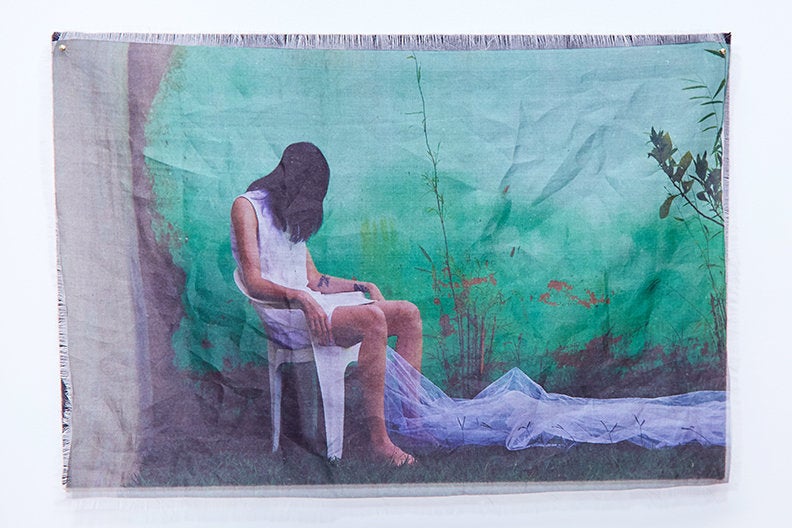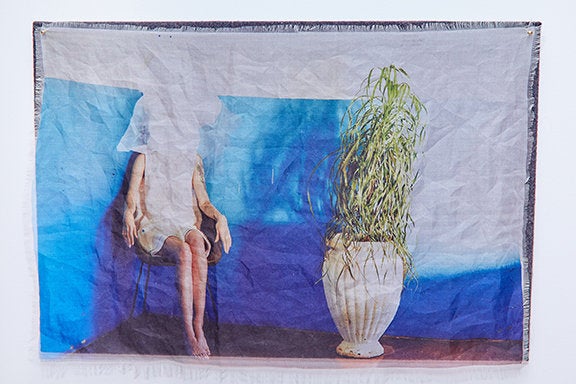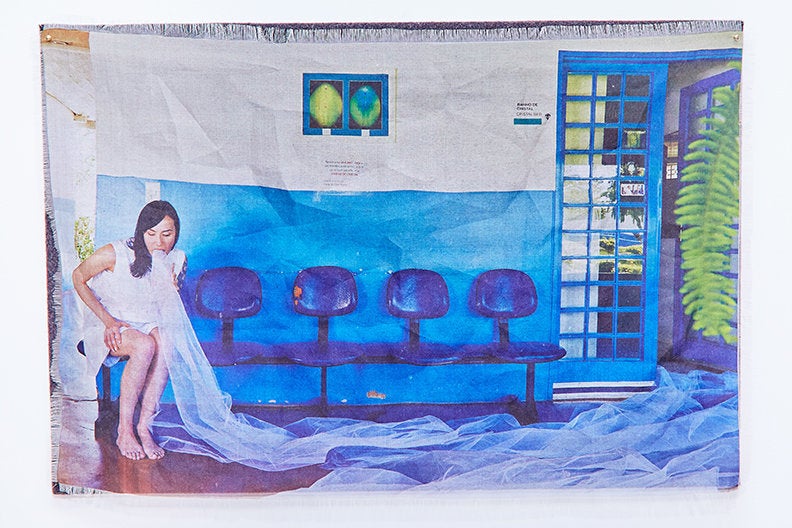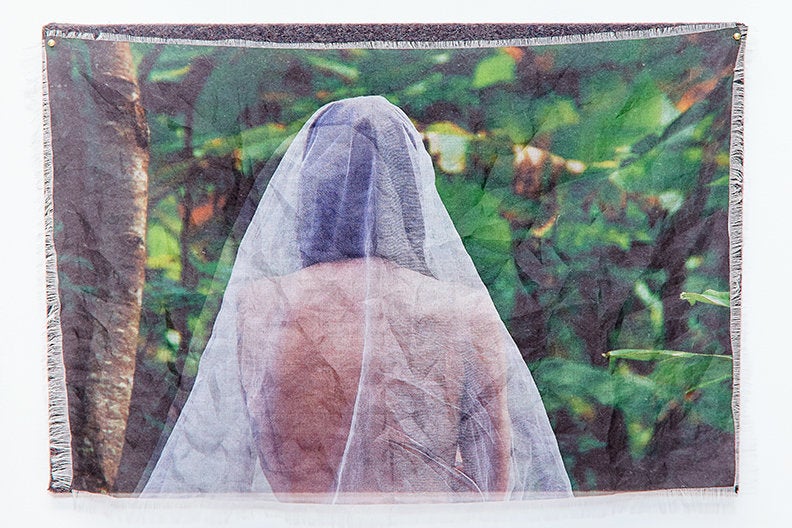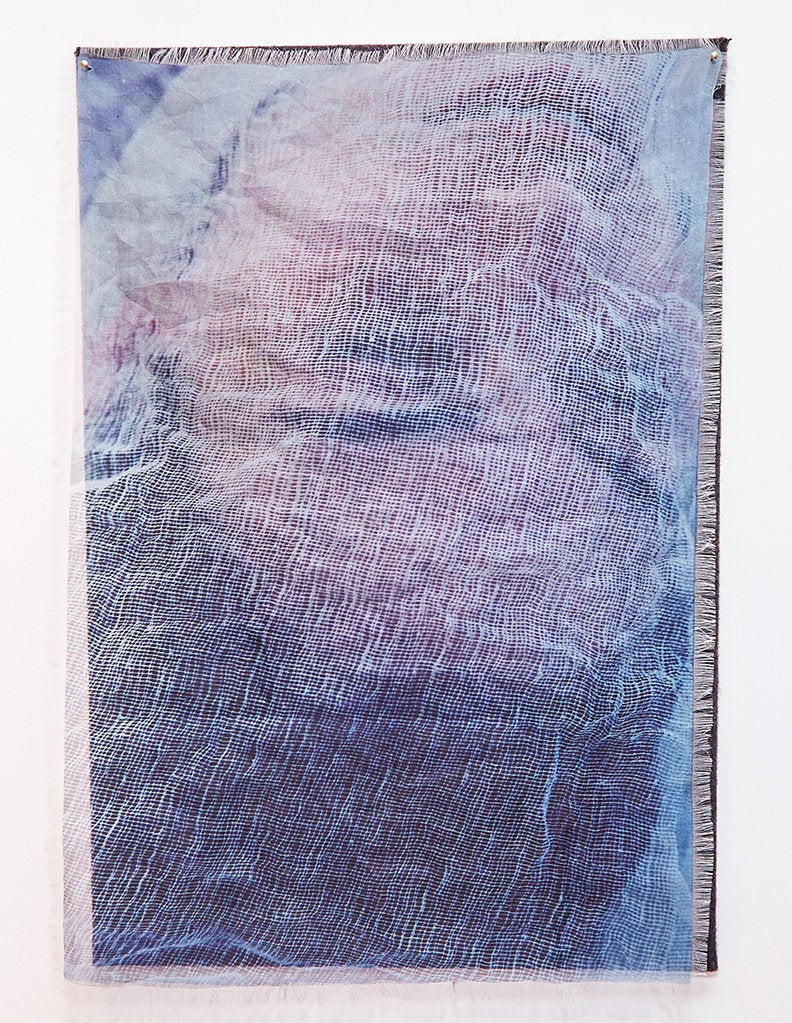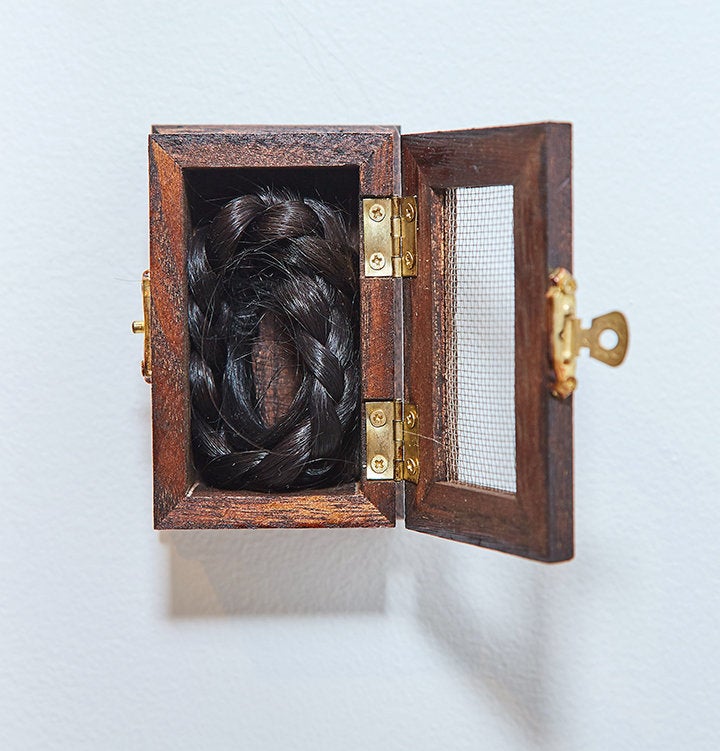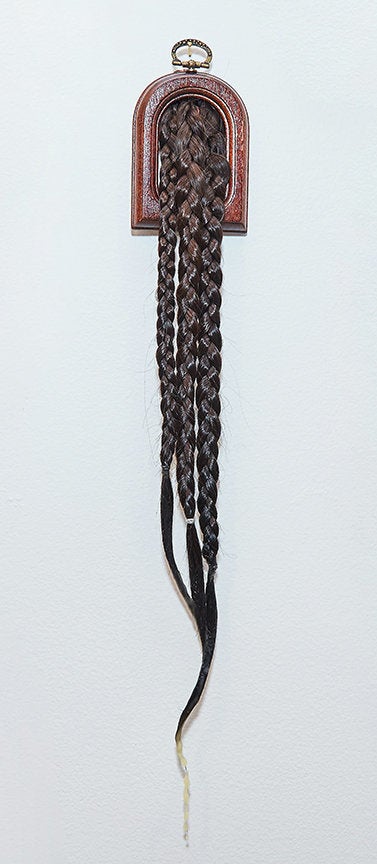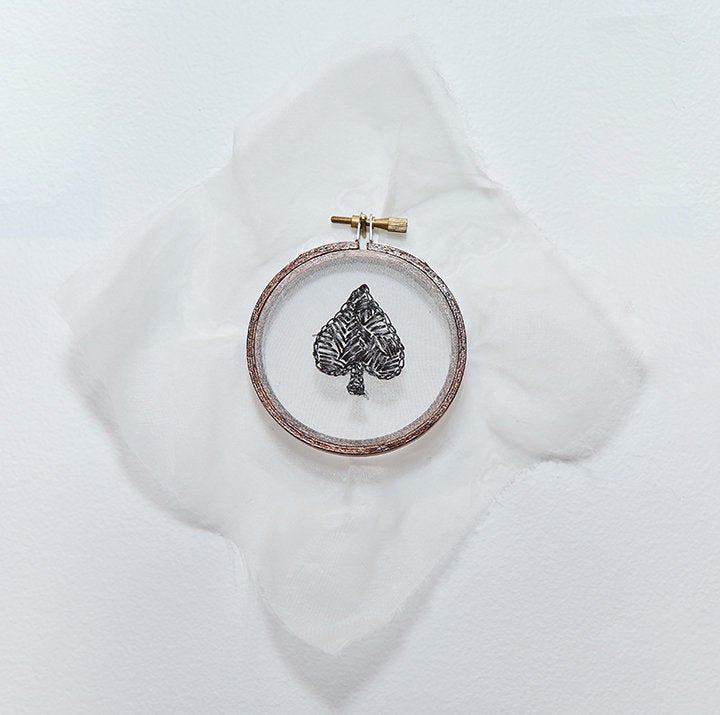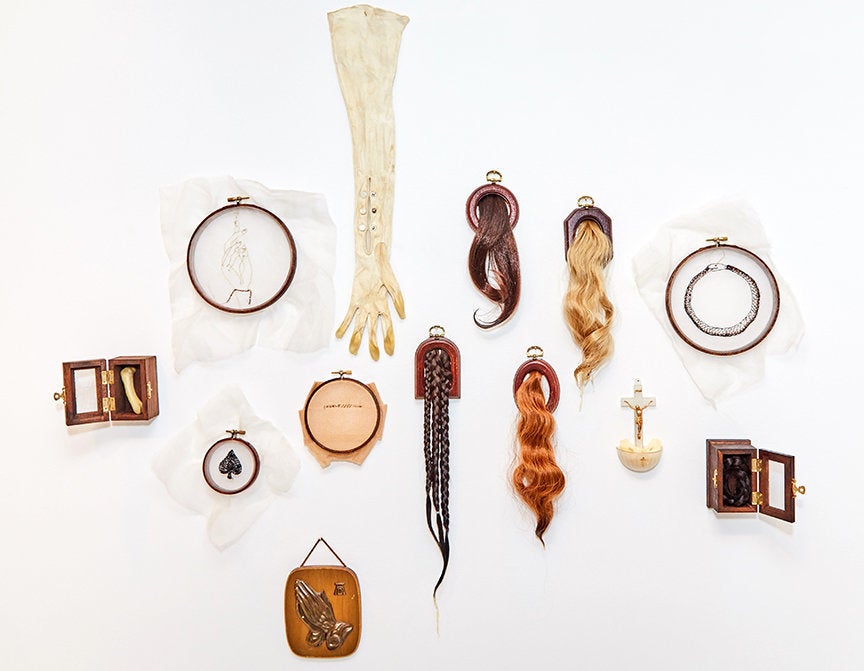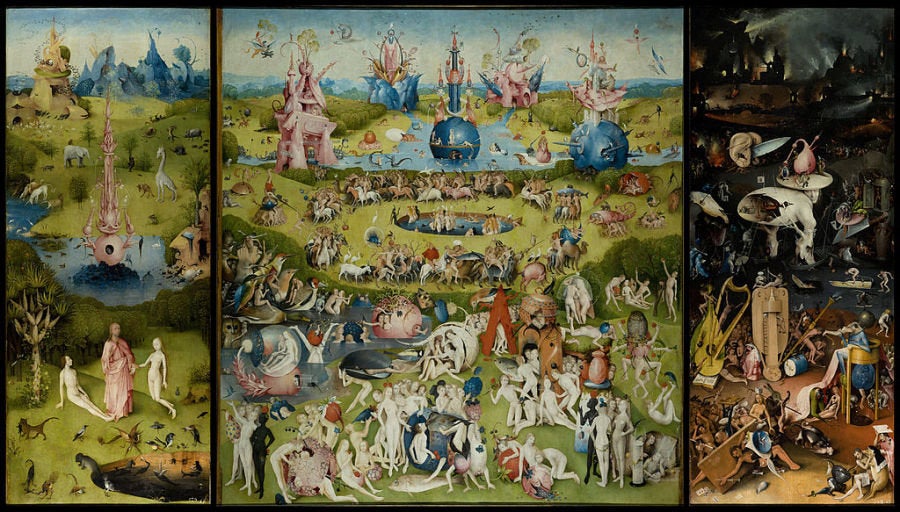"The works are my only legacy," artist Kaylin Andres told The Huffington Post when describing her piece "Three Braids." In the delicate sculpture, interwoven strands of Andres' own hair drip languidly from a wooden frame, reminders of how quickly our bodies can become detached, lifeless, and other.
"I find it difficult accepting death at such an early age, before I've had a chance to make my mark on the world," she said. Eight years ago, at 23 years old, Andres was diagnosed with Ewings Sarcoma, a rare and often terminal form of bone cancer. These three braids, lost amidst countless radiation and chemotherapy sessions, embody the way illness rips the body apart, turning active elements into inanimate residue. Andres described her work as a modern day memento mori, a symbolic reminder of the inevitable mortality that affects us all.
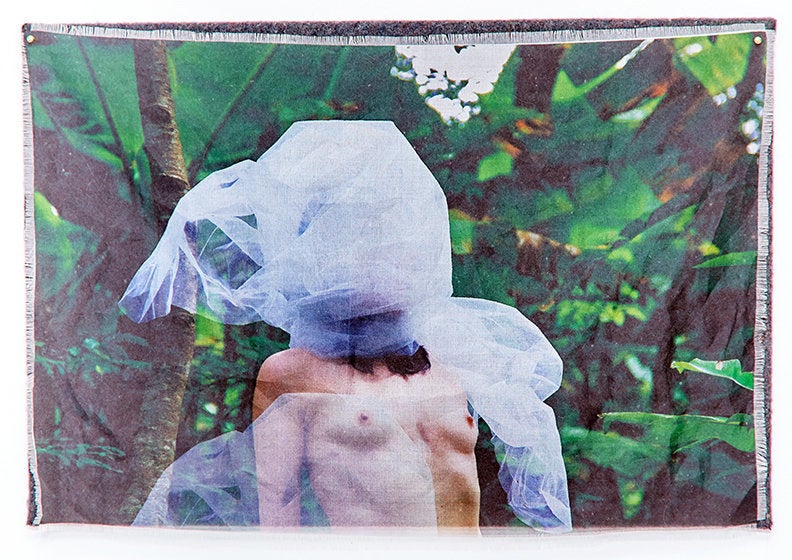
At only 31 years old, Andres has had to face the imminent reality of death head on far before most people her age even begin to feel its looming shadow. In her 2014 exhibition "Chemosynthesis," Andres used her art to grieve her previously healthy life and begin to adapt to her new reality. "The chemosynthetic process is a dark mirror to the photosynthesis that fuels the plants that in turn, fuel us," the exhibition statement read. "It replaces the basic undergirding energy source of life: light, with poison."
During "Chemosynthesis," Andres collaborated with artist Max Ritvo, diagnosed with the same, most likely terminal disease, to navigate how two young, aspiring artists adapt and evolve in the face of a life-rupturing illness.
For her current exhibition "Viaticum," Andres explores ideas of acceptance and healing in relation to her own diagnosis, finding peace despite the physical and emotional torment of the disease. "You could say that each project is addressing the different phases of mourning or grief," she said. "It has been a process for me, working out these complex emotions through art."
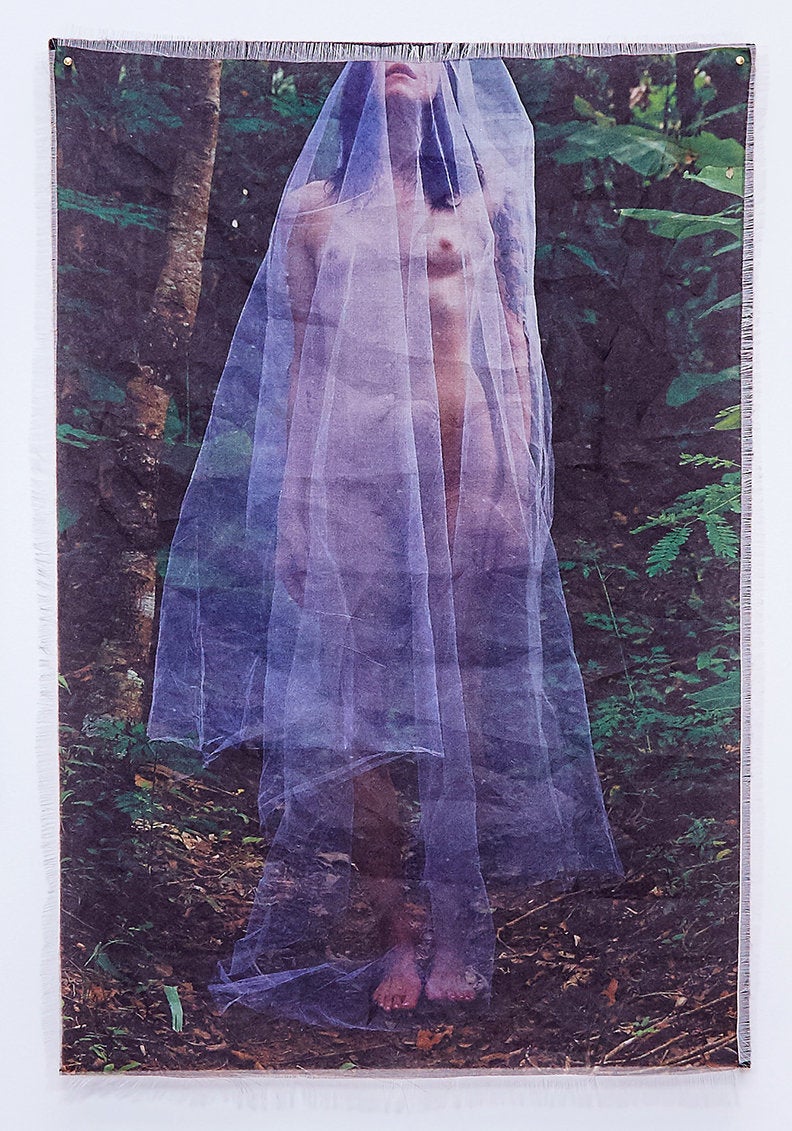
In Catholicism, "Viaticum" refers to the giving of the Eucharist to a person nearing the end of their life. In paganism, the word describes a coin placed in the mouths of the deceased, considered an allowance for their journey to the underworld, an offering for a safe passage into the afterlife. Andres is not Catholic, yet these specific rituals and symbols resonate.
"I have never been religious but it's a subject I'm interested in exploring more and more as I come to the end of my life, and I think that exploration is only natural," she said. "The idea of the existence of a soul is something that interests me very much, I find that comforting."
Andres embarked on the exhibit while on pilgrimage to Brazil last year, a journey to visit iconic healer João de Deus, a spiritual medium working in the overlap between Catholicism and shamanistic mysticism. "It is said this faith healer conjures the spirits of the greatest doctors throughout history to perform psychic medical miracles," Andres writes in her artist statement. "I was, and still am, in need of a miracle. My journey to João was as much about finding hope as it was about finding a cure."
The thing Andres remembers most about her trip to Brazil wasn't a particular event, she says, but the energy in the room as hundreds of pilgrims gathered to see the healer. "It was a very somber, solemn atmosphere, one of total silence and respect," she recalled. "I realized that every person around me, hundreds and hundreds of people, were all suffering immensely, emotionally or physically, enough to seek out a healer. And I was suffering, too. That was a powerful realization, and it was then that I really understood the value of seeking healing."
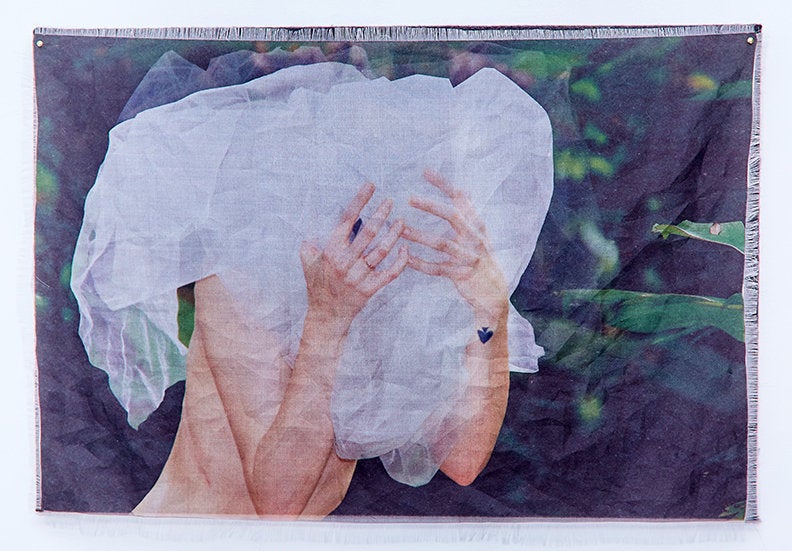
Inspired by her journey, Andres began her series of soft self-portraits, pigment prints on canvases of silk organza and stretched felt gathered from emergency blankets. "I think we must remain soft when we discuss such heavy concepts as illness and death," Andres, who previously worked as a fashion designer, elaborated. Organza, according to 19th century mediums, is believed to be a physical manifestation of the soul, what's called an ectoplasm. Weightless, sheer and constantly rippling, the material embodies the soft waves of eternity. Combining this material with that of emergency blankets, Andres couples the incorporeal and the tangible, providing both spiritual and physical healing.
In the photographic prints, Andres appears sometimes nude, sometimes in a white dress, a white tulle veil often obscuring her face. The images seem to recall a ritual that can't quite be deciphered, a transformation with details too personal to be legible to the outside eye. In one image, enshrouded in the diaphanous white fabric, Andres resembles an otherworldly bride. While in another, her face crushed into what looks like an oversized tissue, Andres turns crying into a surrealist performance. Reminiscent of Ana Mendieta's earth works, Andres' portraits occupy a liminal space between this world and the next.
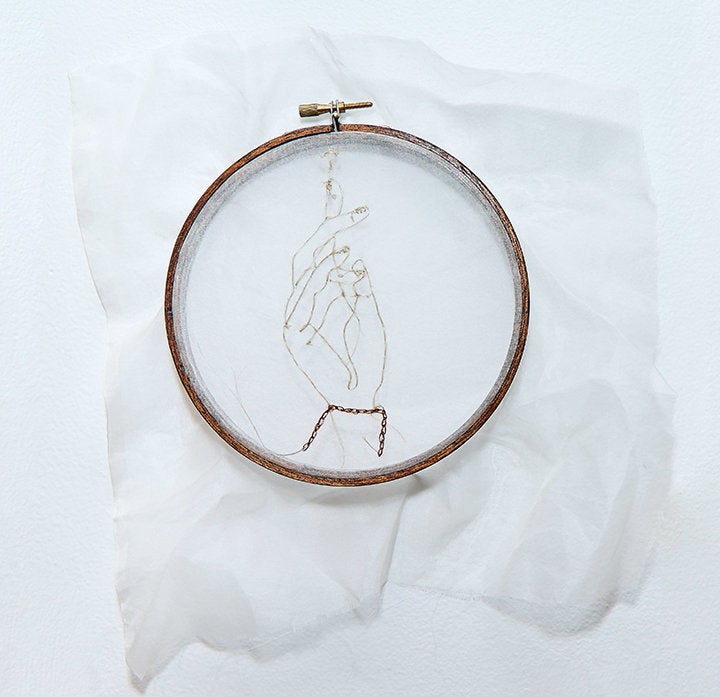
In sculptural works accompanying the prints, Andres incorporates not only her own hair in wooden frames, but also dangling lockets and needlepoint hoops, toying with traditional crafts and domestic rituals, imbuing them with a melancholy sense of eternity. Often such practices serve as banal ways to pass the time, assuming, of course, that time is in great, if not limitless, supply. For Andres, who lives with an enhanced awareness of time's finite nature, such pastimes turn from mindless diversions to precious meditations on time's passing.
Andres' "Viaticum" is soft and quiet, hopeful and at times even humorous, a depiction of what life looks like when the end is in sight. Through her self-portraits, Andres depicts a human being with one foot in the physical world, another in a spiritual dimension, art bridging the space between. For the artist, the ability to create provides some solace during unimaginably trying times. "Art gives me a reason to continue to live and work," she said. "It is a form of catharsis."
Few of us can imagine what it's like to live through the physical and emotional struggles Andres has been forced to undergo. Through her artistic practice, she shares the nuanced realities of her story and all the weight it carries, doing so with an incredible optimism that is at once realistic, weightless and soft, illuminating the ways her story overlaps with yours and mine. "I hope to communicate subtle emotions. I hope to communicate my own extremely unique and yet universally relatable human experience," she concluded.
